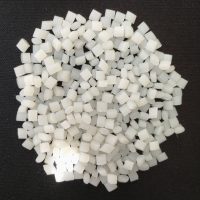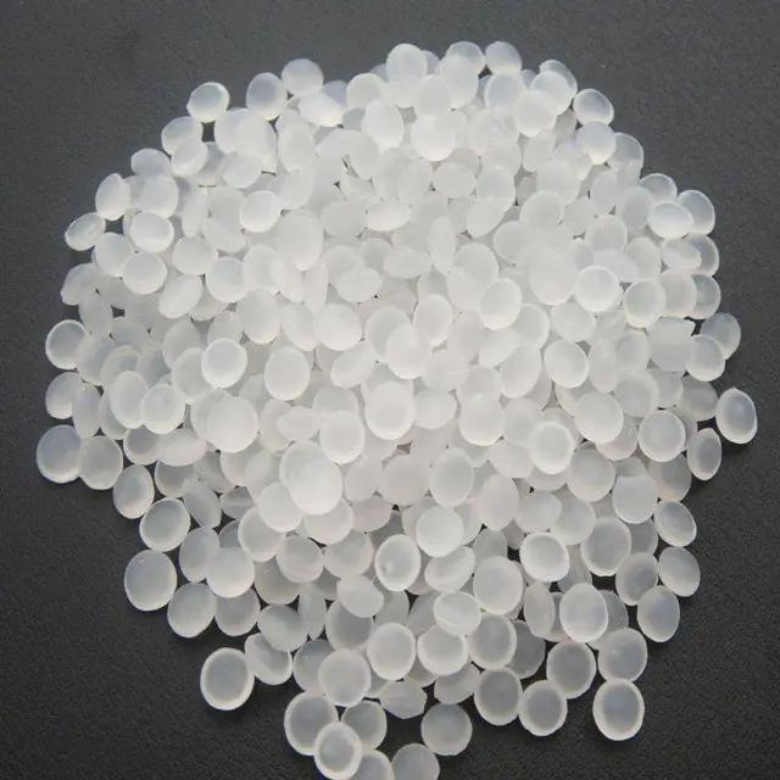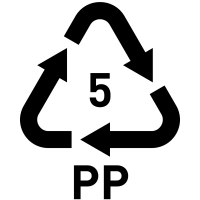What is HDPE ?
High Density Polyethylene (HDPE) is a type of polyethylene, a synthetic polymer made from the monomer ethylene. HDPE is known for its high strength-to-density ratio and is one of the most widely used plastics in the world. It is commonly used in a variety of applications, including packaging, construction, and transportation.
HDPE is characterized by its high strength and stiffness, as well as its resistance to chemicals, UV radiation, and environmental stress cracking. It is also highly resistant to moisture and water absorption, making it an ideal choice for outdoor applications. HDPE is also resistant to fatigue and wear, making it a durable material for a variety of applications.
The main advantages of HDPE is its versatility. It can be molded into a wide range of shapes and sizes, and it can be used to create a variety of products, including pipes, containers, and automotive parts. HDPE is also easy to process and can be welded, making it a popular choice for piping and infrastructure projects.
However, HDPE does have some limitations. It is not as strong as some other polymers, such as polycarbonate, and it is not as heat resistant as some other plastics. It also has a relatively low melting point, which can make it difficult to work with in certain applications.

There are several different MFI levels available in HDPE moulding grade, including:
- Low MFI : Low MFI HDPE moulding grade has a low viscosity and is easy to flow. It is commonly used in applications that require fast processing speeds, such as injection molding and blow molding.
- Medium MFI : Medium MFI HDPE moulding grade has a moderate viscosity and is suitable for a wide range of applications. It is commonly used in the production of a variety of plastic products, such as bottles, containers, and automotive parts.
- High MFI : High MFI HDPE moulding grade has a high viscosity and is difficult to flow. It is commonly used in applications that require high strength and stiffness, such as pipes and structural components.
Some of the application usage of HDPE are :
- Packaging : HDPE is commonly used to create packaging materials, such as bottles, containers, and bags.
- Construction : HDPE is used in a variety of construction applications, including pipes, gutters, and roofing membranes.
- Transportation : HDPE is used in the manufacture of automotive parts, such as fuel tanks and bumpers. It is also used to create parts for trains, buses, and airplanes.
HDPE Raffia
HDPE raffia is a type of raffia that is made from high density polyethylene (HDPE), a synthetic polymer made from the monomer ethylene. HDPE raffia is known for its high strength, durability, and resistance to UV radiation and environmental stress cracking. It is commonly used in a variety of applications, including packaging, agriculture, and construction.
To make raffia from HDPE raffia grade, the pellets are melted and extruded through a small, circular die to create thin strands of plastic. The strands are then cooled and collected on a spool or reel. The collected strands are then woven or braided together to create the finished raffia material.
In the packaging industry, HDPE raffia is often used to create bags, sacks, and wrapping materials. It is also used in the agriculture industry to create twine, ropes, and netting. In the construction industry, HDPE raffia is used to create reinforcing materials, such as geogrids and geotextiles.
HDPE raffia is also used in a variety of other applications, including landscaping, automotive, and marine. It is often used to create ropes, cords, and webbing for these applications, due to its high strength and durability.

HDPE Pipe
HDPE pipe grade is a type of polyethylene (PE) plastic that is specifically designed for use in the construction of pipes. HDPE pipe grade is known for its high strength, toughness, and resistance to chemicals and environmental stress cracking. It is also highly resistant to moisture and water absorption, making it an ideal choice for piping applications.
Pipes made from HDPE pipe grade are typically produced using the extrusion process, which involves melting the HDPE pipe grade resin and forcing it through a die to create a continuous tube of plastic. The tube of plastic is then cooled and cut into the desired length to create the finished pipe.
There are several varieties of HDPE pipe grade, including:
- PE100 : PE100 is the highest-strength and most pressure-resistant grade of HDPE pipe grade. It is commonly used in high-pressure piping applications, such as water and gas pipelines.
- PE80 : PE80 is a lower-strength grade of HDPE pipe grade that is commonly used in medium-pressure piping applications, such as irrigation and sewer lines.
- PE63 : PE63 is a lower-strength grade of HDPE pipe grade that is commonly used in low-pressure piping applications, such as drainage systems.
HDPE pipe grade is used in a variety of applications, including:
- Water and sewage systems : HDPE pipe grade is commonly used to create pipes for water and sewage systems due to its high strength and resistance to chemicals and environmental stress cracking.
- Gas pipelines : HDPE pipe grade is used to create pipes for natural gas and propane pipelines due to its high pressure resistance and corrosion resistance.
- Mining : HDPE pipe grade is used in mining applications to create pipes for slurry transport and to contain hazardous materials.
- Agricultural irrigation : HDPE pipe grade is used to create pipes for agricultural irrigation systems due to its resistance to corrosion and UV radiation.
HDPE Blow
HDPE blow grade is a type of polyethylene (PE) plastic that is specifically designed for use in blow molding, a manufacturing process that involves blowing hot, molten plastic into a mold to create a specific shape.
Some common types of containers that can be made from HDPE blow grade include:
- Bottles : HDPE blow grade is commonly used to create bottles for a variety of products, including personal care products, household cleaners, and food and beverages.
- Jars : HDPE blow grade is used to create jars for a variety of products, including food products, cosmetics, and household items.
- Pails : HDPE blow grade is used to create pails for a variety of products, including chemicals, paints, and adhesives.
- Drums : HDPE blow grade is used to create drums for the storage and transport of liquids and powders.
HDPE Film
HDPE film grade is used in the production of thin, flexible films. Films made from HDPE film grade are typically produced using the extrusion process, which involves melting the HDPE film grade resin and forcing it through a die to create a continuous sheet of plastic. The sheet of plastic is then cooled and rolled onto a spool or reel for further processing or storage. HDPE film grade is used in a variety of applications, including:
- Packaging : HDPE film grade is commonly used to create packaging materials, such as bags, wraps, and sheets.
- Agriculture : HDPE film grade is used to create mulch films, which are placed over soil to retain moisture and prevent weeds from growing. It is also used to create greenhouse films, which are used to cover greenhouses to create a controlled environment for plant growth.
- Construction : HDPE film grade is used in the production of construction materials, such as vapor barriers and moisture barriers.
- Consumer goods : HDPE film grade is used in the production of a wide range of consumer goods, such as trash bags, sandbags, and shopping bags.
HD Moulding
HDPE moulding grade is used in the production of molded plastic products. There are several varieties of HDPE moulding grade, including:
- High strength HDPE moulding grade that is commonly used in high-strength plastic products such as automotive parts, such as fuel tanks and bumpers, and outdoor furniture.
- Medium strength HDPE moulding grade that is commonly used in medium-strength plastic products, such as toys and household items.
- Lower strength HDPE moulding grade that is commonly used in low-strength plastic products, such as disposable cups and containers.
About Viztaar
Viztaar is a tech enabled marketplace that facilitates B2B commerce in bulk industrial raw materials.
By leveraging technology, Viztaar helps buyers find the best prices from sellers across the country thereby optimizing their purchases and improve their bottom line. Buyers get cheapest prices, assured quality and reliable deliveries thereby ensuring complete peace of mind in managing their supply chains through Viztaar.
For sellers, Viztaar provides easy access to buyers on a pan India basis without having to invest in costly sale and marketing functions, acting as their wide reaching distribution network where they can quickly sell their inventory, improve their volumes and focus on optimizing their cash flows.

About Sabic
SABIC, a global leader in diversified chemicals and innovative materials, is at the forefront of driving technological advancements. Renowned for its cutting-edge solutions, SABIC delivers high-performance polymers, chemicals and specialty materials. With a commitment to sustainability, SABIC contributes to shaping a more resilient and sustainable future through its innovative products and industry leadership.
SABIC, a prominent global player, boasts renowned brands like Lexan and Noryl. Their diverse product portfolio spans chemicals, plastics, agri-nutrients and metals, showcasing a commitment to excellence and innovation in various industries

SABIC, a prominent global player, boasts renowned brands like Lexan and Noryl. Their diverse product portfolio spans chemicals, plastics, agri-nutrients and metals, showcasing a commitment to excellence and innovation in various industries
What is Polypropylene ?
Polypropylene (PP) is a popular thermoplastic polymer used in a wide range of applications. It is a part of the polyolefin group of plastics, which also includes polyethylene (PE). PP is characterized by its high strength-to-weight ratio, chemical resistance and durability.
There are several methods for manufacturing PP, including bulk polymerization, solution polymerization and gas-phase polymerization. The most common method is bulk polymerization, in which the monomer propylene is polymerized in the presence of a catalyst to form PP. The resulting polymer is then melted and formed into the desired shape.
One of the key properties of PP is its high strength-to-weight ratio, which makes it an ideal material for use in automotive and packaging applications. It is also resistant to chemicals, making it suitable for use in the chemical industry. PP has a high melting point and is resistant to heat, making it useful for applications that require high temperature resistance.

Polypropylene (PP) in Diverse Applications
One of the main advantages of PP is its low cost and good value for money. It is also easy to process, making it suitable for use in a wide range of applications. PP is also a lightweight material, which makes it easier to transport and handle.
However, there are also some disadvantages to using PP. It has a low impact resistance and is not as strong as some other polymers, such as polycarbonate (PC). It is also not as flexible as other materials, making it less suitable for applications that require a lot of flexibility.
There are several grades of PP available, including homopolymer, copolymer and impact copolymer. Homopolymer PP is the most common type and is made from a single monomer, propylene. Copolymer PP is made from a mixture of monomers and impact copolymer PP is made from a blend of monomers and has improved impact resistance.
PP has a wide range of applications, including automotive parts, packaging materials, household goods and medical devices. It is also used in the construction industry for pipes and fittings and in the textile industry for ropes, fabric and carpet fibers.
PP Thermoforming
Thermoforming grade PP is a type of PP that is specifically formulated for use in the thermoforming process. It is characterized by its good flow characteristics and ability to maintain its strength and shape during the thermoforming process.
One of the main benefits of using thermoforming grade PP is that it allows for the production of complex and intricate shapes with high accuracy and consistency. It is also easy to process and has good dimensional stability, making it suitable for use in applications that require high precision.
There are several factors that can affect the performance of thermoforming grade PP, including the processing temperature, the pressure applied to the sheet and the cooling rate of the part after it is removed from the mold. It is important to carefully control these factors to ensure that the parts have the desired properties and meet the required specifications.

Thermoforming grade PP is used in a wide range of applications, including automotive parts, packaging materials and household goods. It is also commonly used in the construction industry for pipes and fittings and in the medical industry for devices such as inhalers and pill containers.
PP Film
Polypropylene (PP) film grade is a type of PP that is specifically formulated for use in the production of films. It is characterized by its good flow characteristics, high clarity and good barrier properties, which make it suitable for use in a wide range of film applications.
One of the main benefits of using PP film grade is that it allows for the production of high-quality films with good optical properties and excellent barrier properties. It is also easy to process and has good dimensional stability, making it suitable for use in a wide range of applications.
PP film grade is typically formulated with a high melt flow index (MFI), which means that it has good flow characteristics and is easy to process. It is also formulated with a high clarity and good barrier properties, which make it suitable for use in film applications.
PP film grade is used in a wide range of applications, including food packaging, medical packaging and industrial packaging. It is also commonly used in the production of films for use in the automotive, construction and textile industries.
PP Random
Polypropylene (PP) random grade is a type of PP that is characterized by its random copolymer structure. It is made by copolymerizing propylene with small amounts of other monomers, such as ethylene, to create a polymer with a more diverse range of properties. The presence of ethylene disrupts the crystallization process, resulting in a PP with a lower melting point and lower stiffness, but with higher clarity and better impact resistance.
One of the main benefits of using PP random grade is that it has a combination of the properties of both PP homopolymer (made from a single monomer, propylene) and PP copolymer (made from a mixture of monomers). This makes it a versatile material that can be used in a multiple applications for various range.
These copolymers can be processed using injection molding, blow molding and extrusion techniques. PP random copolymers are often used in applications where the desirable properties of polypropylene are desired, but with increased transparency and clarity, such as storage containers, housewares, office accessories, syringes, medical containers, bottles and sheet.
PP Raffia
PP Raffia is a type of PP that is specifically formulated for use in the production of raffia, a type of strong, flexible and weather-resistant woven material. It is characterized by its good flow characteristics, high stiffness and good impact resistance, which make it suitable for use in the production of raffia.
One of the main advantages of using raffia grade PP is that it allows for the production of high-quality raffia with good strength and durability. It is also easy to process and has good dimensional stability, making it suitable for use in a wide range of raffia applications.
Raffia grade PP is typically formulated with a medium to high melt flow index (MFI), which means that it has good flow characteristics and is easy to process. It is also formulated with a high stiffness and good impact resistance, which make it suitable for use in the production of raffia.
Raffia is used in a wide range of applications, including packaging materials, bags, ropes and other woven products. It is also commonly used in the construction industry for reinforcing materials and in the agriculture industry for tying plants and bundling crops.
One potential disadvantage of raffia grade PP is that it may not be as flexible or as UV-resistant as other materials, such as natural fibers. This may limit its use in certain applications where these properties are important.
PP Moulding
Injection molding grade polypropylene (PP) is a type of PP that is specifically formulated for use in the injection molding process. It is characterized by its good flow characteristics, high stiffness and good dimensional stability, which make it suitable for use in the production of complex and intricate parts.
One of the main advantages of using injection molding grade PP is that it allows for the production of high-quality parts with good accuracy and consistency. It is also easy to process and has good impact resistance, making it suitable for use in a wide range of applications.
Injection molding grade PP is typically formulated with a medium to high melt flow index (MFI), which means that it has good flow characteristics and is easy to process. It is utilized in various applications, including the production of automotive parts, packaging materials and household goods.
PP Lamination & Non Woven
PP Lamination is a type of PP that is specifically formulated for use in the production of laminated materials. It is characterized by its good flow characteristics, high clarity and good barrier properties, which make it suitable for use in the production of laminated materials.
One of the main advantages of using PP lamination is that it allows for the production of high-quality laminated materials with good optical properties and excellent barrier properties. It is also easy to process and has good dimensional stability, making it suitable for use in a wide range of lamination applications.
PP Lamination is typically formulated with a high melt flow index (MFI), which means that it has good flow characteristics and is easy to process. It is also formulated with a high clarity and good barrier properties, which make it suitable for use in lamination applications.
PP Lamination is used in a wide range of applications, including food packaging, medical packaging and industrial packaging. It is also commonly used in the production of laminated materials for use in the automotive, construction and textile industries.
It also finds use in manufacture of non woven cloth in a wide range of applications, including medical products, protective clothing and filtration materials.
PP Copolymer
Polypropylene copolymer (PPC) grade resin is a type of polypropylene (PP) that is made from a mixture of monomers, including propylene and one or more other comonomers. It is characterized by its improved impact resistance, flexibility and toughness compared to PP homopolymer, which is made from a single monomer, propylene.
One of the main advantages of using PPC grade resin is that it allows for the production of parts with improved impact resistance and flexibility compared to those made from PP homopolymer. It is also easy to process and has good chemical resistance, making it suitable for use in a wide range of applications.
PPC grade resin is typically formulated with a medium to low melt flow index (MFI), which means that it has good flow characteristics and is easy to process. It is also formulated with improved impact resistance, flexibility and toughness compared to PP homopolymer.
About Viztaar
Viztaar is a tech enabled marketplace that facilitates B2B commerce in bulk industrial raw materials.
By leveraging technology, Viztaar helps buyers find the best prices from sellers across the country thereby optimizing their purchases and improve their bottom line. Buyers get cheapest prices, assured quality and reliable deliveries thereby ensuring complete peace of mind in managing their supply chains through Viztaar.
For sellers, Viztaar provides easy access to buyers on a pan India basis without having to invest in costly sale and marketing functions, acting as their wide reaching distribution network where they can quickly sell their inventory, improve their volumes and focus on optimizing their cash flows.

About OQ Chemical Corporation
OQ Chemical Corporation, formerly known as Oxea, is a leading global producer of high-quality chemicals and specialty materials. With a commitment to innovation and sustainability, OQ Chemical has established itself as a key player in the chemical industry.
Headquartered in Oman, OQ Chemical has a strong international presence, with manufacturing facilities and offices strategically located around the world. The company operates with a vision to create sustainable value for its customers, stakeholders and the environment.

OQ Chemical specializes in the production of various chemicals and materials that find applications in a wide range of industries, including but not limited to Plastics, Coatings and inks, pharmaceutical personal care and house hold products including the vast range of electronics items.
